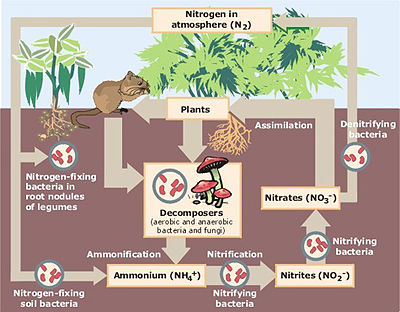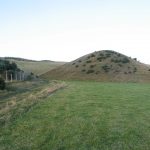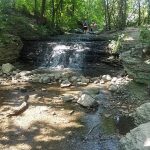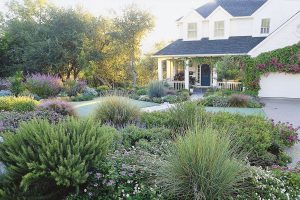By Gary Swick, President
Restoring the Systems
 Working with unified efforts and a sense of collaboration, we can move forward together while we navigate a global pandemic, overcome our national social injustices, and address climate change on all levels.
Working with unified efforts and a sense of collaboration, we can move forward together while we navigate a global pandemic, overcome our national social injustices, and address climate change on all levels.
We have challenges ahead but our own successes with the Fox River watershed’s protection and restoration serve as an example that we can do this. What it takes is identifying the need, understanding the steps toward addressing the challenge, and committing to taking the necessary actions. Individual efforts can achieve a collective goal.
Ecosystems
As watershed residents, we can do something collaboratively to repair a serious watershed issue, the unraveling of an ecosystem. An ecosystem is the complex network of interrelationships between the various living members (flora and fauna) and non-living (climate, geography, geologic foundation) components. The Fox River watershed is a collection of many ecosystems, including prairies, woodlands, wetlands, rivers, lakes, and bogs. These ecosystems have all been pressured by human encroachment through significant landscape changes.
Ecosystem Casualties
As European settlers found the Midwest rich in natural resources, the conversion began. Forests were cleared for timber and grazing areas, prairies plowed for agriculture, wetlands drained, streams channelized, and dams constructed on the rivers for hydropower. In Illinois, we now have less than 1% of natural areas remaining and less than .006% of tall grass prairies remaining. Ecosystems were unraveled and permanent damage has been done.
Unique Ecosystems
Because of the diversity of habitats created by very recent (15,000 years ago) glacial action, northeastern Illinois is incredibly diverse. Our watershed contains 19 of the 20 land cover types found in Illinois. Glacial features include: kettle lakes, kames, ridges/moraines, eskers, outwash plains, fens, and exposed bedrock of ancient limestone and sandstone. Many of these Illinois ecosystems are mostly (gravel hill prairies and fens) or only (undegraded lakes and bogs) found in the Fox River watershed. Their rarity alone makes them essential for preservation.
Ecosystem Preservation and Alteration 
Due to foresight, much habitat in the watershed has been protected through initiatives like the Illinois Forest Preserve District Act of 1913 and various collective private investments in land protection, resulting in over 100 legally protected areas. In addition to preservation, northeastern Illinois has been an international leader in natural area restoration efforts since the late ‘70s. As habitat loss from agricultural conversion and through residential development (various forms of modification and destruction) continue, other threats also exist. The introduction of multiple invasive species of both plants and animals have displaced many native species.
Habitats
Ecosystems contain habitats. Consider that a habitat is a collection of environmental conditions in an arrangement which can support a particular species. Places to locate food, hide from predators, take shelter from harsh conditions, find adequate resources to raise young, and even to locate suitable grounds for successful mating must all be present and accessible. If any of those conditions are absent, a species may not be able to survive in a particular location. The relationships within an ecosystem that have developed and evolved over 10,000 years have given us our resident plants and animals. Some are highly specialized, like the Monarch butterfly and milkweed plant. Any degradation or loss of habitat and/or the introduction of foreign species puts pressure on the natives.
 Habitats Among Lawns
Habitats Among Lawns
Although a small percent of our watershed is composed of lawns, turf has caused an ecosystem elimination that has been devastating to important native species. But natural area restoration is an endeavor that most of us can participate in and make a positive impact. In Doug Tallamy’s popular book, Nature’s Best Hope, he promotes the concept of the “Homegrown National Park.” In our yards, we cannot replicate vast prairies, woodlands, and wetlands, but we can offer important habitat components. Collectively, we can create large corridors of suitable conditions that can restore important relationships, especially for plants, insects, and birds. Together, we can create a significant park/preserve. A local initiative from Northern Kane County Wild Ones, called Start in Your Yard, is currently beginning in Elgin, with planned growth throughout the watershed.
Habitats in Yards for Ecosystem Reconstruction
Consider that plants convert the sun’s energy into food. That food is used by primary consumers like insects which in turn are consumed by birds. Since the most common plants in our yards (turf and ornamentals) are not native, they provide very limited habitat for native insects which contributes to a significant decline in native birds. If we individually select and plant native plants in our yards (and other turf-dominant areas) we can collectively restore the health and diversity of our Fox River ecosystems.
Be Part of the Solution 
Please commit to converting part of your yard or turf-dominant area, such as a school, church or business to native habitat. We have a very serious need due to historic degradation from settlement and our own conversions to lawns. The resources to restoration are numerous and it is easy, inexpensive, and you will see immediate results. In addition to providing habitat, native plants protect the watershed through their low maintenance requirements (fertilizing, weeding, watering). Together, we can all participate in reestablishing our damaged ecosystems.
For additional information on adding natives to your landscape, refer to these resources:
McHenry County: The Wildflower Preservation & Propagation Committee







Do you know why municipalities such as Batavia and Montgomery have recently (since fall of 2020) cut down so many trees along the river in their towns? Entire stretches of riverbank have been clearcut. This is an alarming trend!
Batavia has hired Hichkock Design to plan 200 acres of impoundment since dam has failed and expected to be removed. What to do with reclaimed wetland and shore erosion will be hot topic.